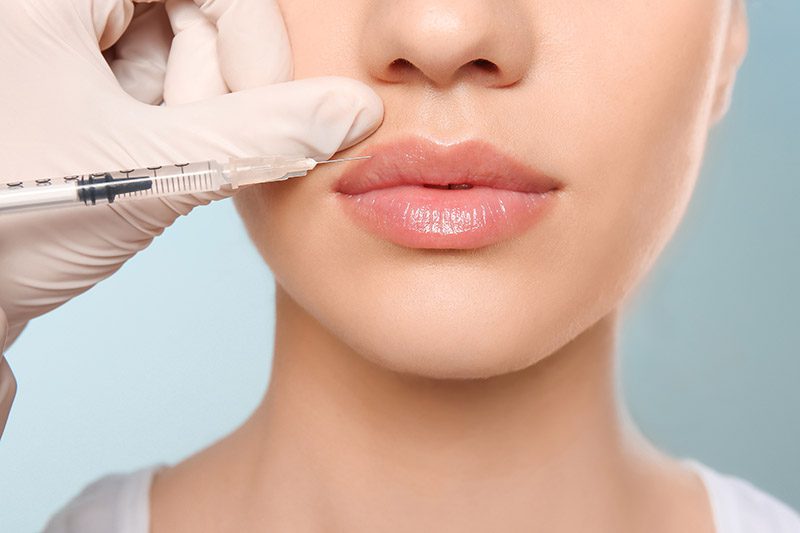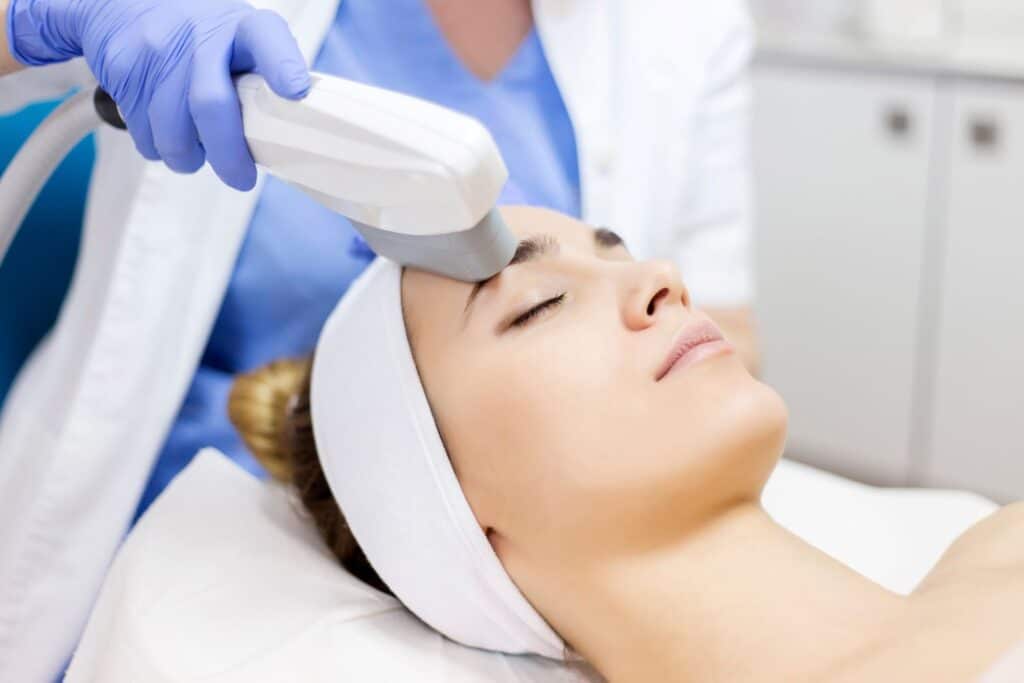Understanding Morpheus8 Treatment
Technology Explained
Morpheus8 treatment combines microneedling with RF energy. This technology uses tiny needles to create microlesions in the skin as part of a microneedling rejuvenate cosmetic treatment in cosmetic dermatology. These injuries stimulate the body’s natural healing process.
RF energy, or radiofrequency energy, heats the deeper layers of the skin, resulting in minimal side effects and requiring no needles, making it suitable for day procedures. This heat promotes collagen production. Collagen helps to tighten and smooth the skin. The combination of microneedling and RF energy makes Morpheus8 effective for many skin issues.
Skin Rejuvenation Benefits
Morpheus8 therapy offers multiple benefits for skin rejuvenation. It can reduce fine lines and wrinkles. The treatment also improves skin texture and tone.
Many people use Morpheus8 treatments to address acne scars, laser skin resurfacing, and surgical skin rejuvenation procedures for revitalized skin. The combination of microneedling and RF energy in this surgical skin remodelling procedure breaks down scar tissue. This leads to smoother skin over time.
Ideal Candidates
Not everyone is a perfect candidate for Morpheus8 treatment, and some may need to consider potential side effects. Ideal candidates need to be adults with mild to moderate skin issues. People with loose skin, fine lines, or acne scars may need to benefit the most.
Those with darker skin tones can also safely use this treatment. Unlike some laser therapies, Morpheus8 is safe for all skin types. However, individuals with certain medical conditions should consult a doctor first.
Common Side Effects
Redness
Redness is a common side effect of Morpheus8 treatment. The skin may appear red immediately after the procedure. This redness is usually mild. It typically subsides within a few hours or days.
Swelling
Swelling often occurs in the treated area. This normal side effect can last for a few days. Keeping the head elevated helps reduce swelling. Applying cold compresses can also be beneficial.
Bruising
Bruising might develop at the treatment site. This is another possible side effect. Bruises are usually mild and fade within a week. Avoiding blood-thinning medications before the procedure can help minimize bruising.
Tenderness
Tenderness or discomfort in the treated area is common. The skin may feel sensitive to touch for a few days. Over-the-counter pain relievers can help ease this tenderness.
Dryness
Dryness or flakiness of the skin might occur after Morpheus8 treatment. Moisturizing the skin regularly can alleviate this issue. Drinking plenty of water also helps maintain skin hydration.
Itching
e people experience itching as their skin heals. This side effect is temporary and usually mild. Avoid scratching to prevent irritation.
Temporary Nature
These side effects are generally temporary. Most side effects subside within a few days. Following post-treatment care instructions is crucial for minimizing these effects.
Post-Treatment Care
Proper post-treatment care is essential to reduce side effects:
- Keep the treated area clean and dry.
- Apply prescribed ointments or moisturizers.
- Avoid direct sunlight on the treated area.
- Wear sunscreen if going outside.
- Do not use harsh skincare products.
Managing Side Effects
Swelling and Redness
Swelling and redness are common after Morpheus8 treatments. The microneedling process causes these reactions. Tiny needles create micro-injuries in the skin, triggering a natural healing response.
To manage swelling and redness at home, use cold compresses. Apply them gently to reduce inflammation. Elevating your head while sleeping can also help decrease swelling.
These symptoms are usually short-lived. They typically fade within a few days. If they persist, consult your healthcare provider.
Scabbing and Bruising
Scabbing is part of the skin’s healing process after Morpheus8 treatment. It forms as the skin repairs itself. Avoid picking at scabs to prevent infection and scarring.
Bruising can occur, especially with aggressive treatments or sensitive areas. It results from blood vessels breaking under the skin.
To care for bruised skin, keep the area clean and moisturized. Use gentle products to avoid irritation. Arnica gel can help reduce bruising.
Soreness and Pain
e patients experience soreness or pain post-treatment. This discomfort is due to the microneedling process and tissue remodeling.
Over-the-counter pain relief options like ibuprofen can help manage pain. Follow the recommended dosage. If pain persists or worsens, consult a doctor.
Avoid activities that may exacerbate discomfort, such as vigorous exercise or heavy lifting. Resting helps speed up recovery.
Skin Discoloration
Temporary discoloration or pigmentation changes are possible side effects of Morpheus8. These changes happen as the skin heals and regenerates.
Protect your skin from sun exposure to prevent further pigmentation issues. Use sunscreen with high SPF when going outside. Wear protective clothing like hats and long sleeves.
Most discoloration fades within two weeks. If it lasts longer, seek advice from a dermatologist.
Post-Treatment Skin Care
Sun Protection
Applying sunscreen is vital after Morpheus8 treatment. The treated area becomes sensitive to UV damage. Use a broad-spectrum sunscreen with at least SPF 30. Mineral-based sunscreens with zinc oxide or titanium dioxide are best. They provide physical barriers against the sun.
Consistent sun protection helps maintain results. It prevents hyperpigmentation and other sun-related issues. Make it a part of your daily routine for long-term benefits.
Gentle Cleansing
A gentle face wash is essential post-treatment. Choose a soothing cleanser to keep the skin clean without irritation. Avoid harsh scrubs or exfoliants on treated areas. These can cause further damage and slow healing.
Pat the skin dry gently instead of rubbing it. This reduces friction and allows the skin to heal properly. Proper cleansing supports a good skin care regimen.
Makeup Avoidance
Avoid makeup for at least 48 hours after treatment. This allows the skin to heal without interference. Applying makeup too soon can clog pores and cause breakouts. It can also lead to infections.
If redness or discoloration needs covering, opt for non-comedogenic products. These alternatives are less likely to irritate the skin.

Follow-up Visits
Follow-up visits are crucial for optimal results. Schedule these visits according to your dermatologist’s recommendations. These sessions help assess progress and plan additional treatments if needed.
Report any unusual side effects during follow-up visits. This ensures any issues are addressed promptly. Consistent follow-up care is key in your skin rejuvenation journey.
Importance of Choosing a Certified Provider
Credentials Matter
Choosing a certified provider for Morpheus8 treatments is crucial. Certification ensures that the practitioner has undergone proper training. They understand the complexities of the procedure. This knowledge is essential for safety and effectiveness.
Look for providers with certifications from reputable organizations. These might include the American Board of Cosmetic Surgery or similar bodies. Certified providers are more likely to follow stringent safety protocols. They stay updated with the latest techniques.
Check Reviews
Patient reviews offer insight into a provider’s reputation. Look for reviews on trusted websites like RealSelf or Healthgrades. Positive feedback often indicates satisfied patients and successful treatments.
Be wary of providers with many negative reviews. Consistent complaints about pain, side effects, or poor results are red flags. Reviews can reveal patterns in a provider’s practice.
Before-and-After Photos
Before-and-after photos show real patient outcomes. Reputable providers will have a gallery of these images. They demonstrate the provider’s skill and experience with Morpheus8 treatments.
Examine these photos closely. Look for consistency in results. Pay attention to skin texture improvements and overall appearance. Photos can help you gauge what to expect from your treatment.
Risks of Inexperienced Providers
Inexperienced or uncertified practitioners pose significant risks. They may lack the necessary skills to perform the procedure safely. This can lead to complications such as:
- Burns: Incorrect settings on the device can cause burns.
- Infection: Poor hygiene practices increase infection risk.
- Scarring: Improper technique can result in scarring.
These risks underscore the importance of selecting a qualified provider.
Consultation Tips
A consultation is an opportunity to assess a provider’s expertise. Prepare questions about their experience with Morpheus8 treatments. Ask how many procedures they have performed.
Request details on potential side effects and how they manage them. A knowledgeable provider will offer clear, confident answers.
Observe their communication style during the consultation. Good providers will listen to your concerns and explain the procedure thoroughly.
Verify Facility Standards
The facility where the treatment occurs should meet high standards. Check if it is accredited by recognized health organizations. Accredited facilities adhere to strict safety and hygiene protocols.
Inspect the cleanliness of the clinic during your visit. A clean environment reduces infection risk and reflects professionalism.
Procedure Overview
During Treatment
Patients can expect a straightforward Morpheus8 procedure. A numbing cream is applied to the treatment area. This helps reduce discomfort during the process.
During the procedure, patients might feel warmth or pressure on their skin. These sensations are normal and indicate the device is working. The technique uses micro-needles to penetrate the skin.
To ensure comfort, doctors monitor patients closely. They adjust settings based on individual pain tolerance. This makes the invasive procedure more bearable.
Expected Results
Visible improvements in the skin can be noticed within a few weeks. However, results are gradual as collagen production increases over time.
Patients can expect significant changes in skin texture, tone, and firmness. These improvements become more apparent after multiple sessions. The procedure targets deeper layers of the skin for lasting effects.
Skin Changes
Morpheus8 can achieve specific changes in skin appearance and texture. It reduces scars and tightens the skin effectively.
The procedure stimulates natural healing processes. This leads to healthier skin overall. Patients often see reduced fine lines and improved elasticity.
Morpheus8 is versatile in treating various skin concerns across different body areas. It addresses issues like acne scars, wrinkles, and sagging skin.
Duration of Effects
Morpheus8 results can last up to a year with proper skincare and protection. Maintaining these results requires effort from patients.
Annual follow-up sessions help sustain improvements. These sessions refresh the skin and keep it looking youthful.
A good skincare routine is essential to extend Morpheus8 results. Using sunscreen, moisturizers, and avoiding harsh products can make a difference.
Why Side Effects Occur
Controlled Microdamage
Morpheus8 combines microneedling with radiofrequency (RF) energy. This creates controlled microdamage to the skin. The needles penetrate the skin, creating tiny wounds. RF energy heats the tissue below the surface.
This combination triggers a healing response. Swelling and redness are common side effects. These occur because the body is trying to repair the damaged tissue.
Healing Response
The body’s natural healing process involves inflammation. This is why the skin becomes red and swollen. Blood vessels widen to increase blood flow to the area. White blood cells rush in to fight infection and start the repair process.
Collagen production also increases. Collagen is essential for skin strength and elasticity. The increased collagen helps to rejuvenate the skin but can cause temporary side effects.
Role of Microneedling
Microneedling alone can cause side effects like redness and swelling. The tiny needles create channels in the skin. These channels stimulate the body’s healing response.
Redness and swelling are part of this response. The body sends more blood to the area, which causes redness. Swelling occurs as fluids accumulate to protect and heal the tissue.
Impact of RF Energy
RF energy adds another layer of complexity. It heats the deeper layers of skin, causing thermal damage. This heat stimulates collagen production further.
The heat also tightens existing collagen fibers. This leads to firmer skin but can cause more pronounced side effects initially.
Temporary Nature
These side effects are usually temporary. They are signs that the treatment is working. The body is repairing itself, which takes time.
Most people see these side effects subside within a few days. Some might experience them for up to a week. It depends on individual healing rates and skin types.
Normal Recovery Process
Side effects from Morpheus8 are a normal part of recovery. They show that your skin is responding to treatment. This response is necessary for achieving long-term benefits.
Closing Thoughts
Morpheus8 offers incredible benefits, but understanding and managing side effects is crucial. Your post-treatment skin care routine and choice of a certified provider play major roles in your results. Knowledge is power—being well-informed helps you make the best decisions for your skin health.
Ready to take the next step? Consult with a certified Morpheus8 provider today. Stay proactive about your skin care and enjoy the benefits of this advanced treatment. Your journey to healthier, rejuvenated skin starts now. Don’t wait—take action and experience the transformation!
Frequently Asked Questions
What is Morpheus8 treatment?
Morpheus8 is a minimally invasive skin rejuvenation procedure. It combines microneedling with radiofrequency energy to target deeper layers of the skin.
What are the common side effects of Morpheus8?
Common side effects include redness, swelling, and mild discomfort. These typically resolve within a few days.
How can I manage side effects after Morpheus8?
Use gentle skincare products and avoid sun exposure. Cold compresses can help reduce swelling and redness.
Why do side effects occur with Morpheus8?
Side effects occur due to the skin’s natural healing response. Microneedling and radiofrequency energy stimulate collagen production, causing temporary irritation.
What post-treatment skin care should I follow?
Cleanse your face gently and apply a soothing moisturizer. Use sunscreen daily to protect your skin from UV damage.
Why is it important to choose a certified provider for Morpheus8?
A certified provider ensures safe and effective treatment. They have the expertise to minimize risks and manage any complications.
Can anyone undergo Morpheus8 treatment?
Most people can benefit from Morpheus8. However, it’s essential to consult with a certified provider to determine if it’s right for you.











